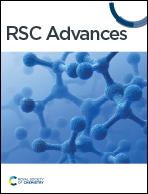Enhancing thermometric efficiency: a wavelength excitation analysis in LiSrGdW3O12:Tb3+ for superior single band ratiometric (SBR) thermometry
Abstract
This study delves into the Single Band Ratiometric (SBR) method for luminescence thermometry, specifically employing Tb3+-doped LiSrGdW3O12 (LSGW) as a novel phosphor. The prepared samples crystallize with the tetragonal scheelite structure, with the optimal Tb3+ concentration pinpointed at 0.3Tb3+ ions. When stimulated at diverse wavelengths exhibit luminescence characterized by varying heat dependencies. By utilizing two Fluorescence Intensity Ratio (FIR) parameters for the 544 nm green emission, firstly excited at 405 nm and 488 nm, and then at 405 nm and 379 nm, the Sr relative thermal sensitivity of the luminescent thermometer peaks at 3.56% K−1 and 4.21% K−1, respectively, within the temperature range of 290–440 K. The temperature resolution (δT) of the luminescent thermometer is calculated to be δT1 = 0.68 K and δT2 = 0.75 K for T = 290 K, respectively. These outcomes underscore the applicability of Tb3+ ions for SBR thermometry, emphasizing the impact of the excitation wavelength on the thermal sensitivity. The study lays the groundwork for developing highly sensitive temperature probes by elucidating the interplay of material properties and physical processes.



 Please wait while we load your content...
Please wait while we load your content...